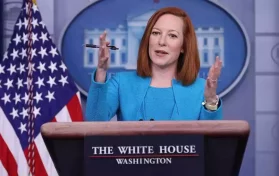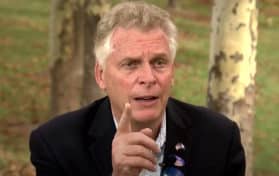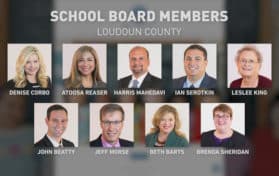
Critical Race Theory is a hot catchphrase at the moment; it is hotly debated within the political community, and many believe that angry parents who don’t want to see this curriculum introduced in public schools swung the Virginia gubernatorial election. However, there are just as many individuals who aren’t quite sure what CRT is, and researching the idea often brings more questions than answers. How can parents know whether Critical Race Theory is in fact being presented in schools? Does it have a place in public education? Is it harmful or hurtful for young students? Let’s take a look at both sides of the issue.
How is Critical Race Theory Defined?
Finding a clear definition of Critical Race Theory is difficult at best. Law professor Kimberle Crenshaw, one of the leading creators of Critical Race Theory, gave this statement regarding CRT: “CRT is not so much an intellectual unit filled with stuff – theories, themes, practices, and the like – but one that is dynamically constituted by a series of contestations and convergences pertaining to the ways that racial power is understood and articulated in the post-civil rights era.” The Encyclopedia Britannica defines CRT as “an intellectual movement and a framework of legal analysis according to which race is a culturally invented category used to oppress people of color and the law and legal institutions in the United States are inherently racist insofar as they function. The website criticalrace.org reveals that Critical Race Theory is “an outgrowth of the European Marxist school of critical theory . . . an academic movement which seeks to link racism, race, and power.” Another quote on the website deals with “systemic racism” – “race is a predominant part of American life . . there have been significantly different legal and economic outcomes between different racial groups.”
Let’s unpack these various statements and definitions regarding CRT. CRT began as more of an intellectual movement among students of legal studies. The founders of CRT include Derrick Bell, Kimberle Crenshaw, Patricia Williams, Cheryl Harris, Mari Matsuda, and Richard Delgado. CRT is an intellectual theory that has come about as a result of the Civil Rights movement. It holds that racism is fully embedded in American culture. First, Americans are often unconsciously racist, according to Charles R. Lawrence III. Lawrence published an article in 1987 which spoke of the “moderate” white person who is not “explicitly racist,” but “accidentally so.” Lawrence took his argument to several psychoanalysts who put the idea in Freudian terms: we “irrationally” attach qualities to a person simply because of one’s skin color.”
Simply put, Critical Race Theory states that all Americans – regardless of race – place stereotypes on members of other races. The theory holds that we Americans do this inherently. Even the critical theory website says, “theorists argue that American social life, political structures, and economic systems are founded upon race.”
What Would Be the Impact for Teaching CRT in Schools?
Thomas Sowell has written much on the topic. Sowell is an often-quoted economist and social theorist. Sowell wrote that this theory will create more issues than solutions to racism. Sowell wrote in The Quest for Cosmic Justice: “(the) pursuit of justice for a segment of society . . .in disregard for society as a whole . . .might more accurately be called anti-social justice . . . what often gets ignored (is) precisely the costs to society.” So, while we Americans strive for all Americans to be equal and to pursue happiness in life equally, is promoting critical race actually more costly to the nation than its worth? CRT holds that all Americans are inherently racist – is this polarization worth the cost of our American unity?
Critical Race Theory up until the last few years was a conversation for college-level classes; in fact, one Democratic pundit said as much Sunday on a CNN broadcast. However, CRT is beginning to infiltrate secondary schools, and parents say it is present in elementary schools as well. Readers have likely heard of children telling their parents about what they are learning in school, but much of this is anecdotal evidence as some teachers and administrators are denying that CRT is being taught in public schools.
Many in the main stream media and several political pundits are denying that CRT is being taught in public schools in Virginia or anywhere else in the United States. MSNBC’s Nicolle Wallace went as far as to say that Critical Race Theory “isn’t real” in the wake of the Virginia gubernatorial election. CNN’s Eva McKend echoed the sentiment, and pointed out that Youngkin had repeated talked about CRT’s being taught in schools.
A recent Forbes article stated that the parental backlash against anything perceived to be the teaching of Critical Race Theory is a conversation “about parents and values and distrust of the school.” However, is it a distrust of school authorities, or is CRT being taught in public schools, not just in Loudoun County, VA and Fairfax, VA, but all over the United States?
Loudon County is Ground Zero for the CRT Debate
Loudoun County Schools in Virginia has become the hotbed for whether or not CRT is being taught in schools. Teachers in the district have denied any such type of curriculum. Yet, when looking at the curriculum, it is evident that there are elements of CRT in curricula across the nation. Words like “diversity (training),” “ethnic studies curriculum,” or “intersectionality training” are the chief descriptors of these programs. Parents may also see an “equity toolkit” in their children’s educational supplemental material. While none of these materials use the term “Critical Race Theory” anywhere on their surface, these materials are being used to promote the idea of inherent racism as a bedrock of American culture – and it’s being peddled in classes even as young as kindergarten in some cities across the United States. Head of teachers’ union the American Federation of Teachers, Randi Weingarten, has denied that this is taking place; she said as much at a Terry McAuliffe campaign stop days before the November 2 gubernatorial election in Virginia.
On the other hand, Daniel Buck, an educator who also works as the editor-in-chief for Chalkboard Review, spoke out on the presence of Critical Race Theory in public schools. Buck echoed comments made by an Indiana public school teacher, Tony Kinnett, who recently went public and said that CRT is most definitely being taught in schools. Both educators said that CRT may not be taught per se via the curriculum, but that it is “taught through a lens” – it’s the pedagogy of how a subject is being taught rather than the material itself.
Christopher Rufo, an outspoken critic of CRT, echoes the idea that CRT isn’t a part of the curriculum, but it can easily be implemented in the classroom: “(CRT) is an academic discipline that holds that the United States is a nation founded on white supremacy and oppression, and that these forces are still at the root of our society.” Rufo has referred to CRT as a framework, which means that the ideas can be woven into literature, social studies, mathematics, and even science classrooms. This is the “lens” that Kinnett and Buck spoke of separately.
Rufo pointed to a “toolkit” the Oregon Department of Education sent to middle school teachers in February of this year. Two of the most common practices in math – getting the right answer and showing one’s work (by working out equations) was “white supremacy culture.” California’s state department of education did something similar; they sent a framework to teachers of mathematics which “prioritized equity over quantitative reasoning.” It is these “frameworks” which parents are so opposed to, and although local and state boards have been clever in their wording of framework lingo and curriculum mandates, parents are smart enough to recognize the trigger words when they see them.
Critical Race Theory Could Play a Big Role in Elections
Parents are taking to the polls to show their disapproval of CRT in public schools. Last Tuesday, Virginia parents went to the polls and voted Republican candidate Glenn Youngkin in as their next governor. Loudoun County has drawn much attention across the United States as parents have been overwhelmingly vocal at school board meetings this past year. Aside of anger that the superintendent allegedly covered up a sexual assault that took place in the Loudoun County schools, parents have been vehemently speaking out against teaching Critical Race Theory in the district. This claim has been denied multiple times by the board and the district. However, there is evidence that “pedagogy” is being used to peddle CRT in both elementary and secondary schools, even though the schools deny such.
On Saturday, Asra Nomani spoke on “Fox and Friends,” where she presented a contract between the Loudoun County School District and an educational consulting firm in which the firm provided support services to the school district’s teachers including support for teaching “Critical Race Theory.” She presented another document during the broadcast which she says documented that a Virginia school district was teaching CRT.
Indiana science teacher Tony Kinnett has taken to Twitter to support the idea that Critical Race Theory isn’t being taught in schools. Kinnett began his video by saying that he is a science teacher, a coach and an admin(istrator) in one of the largest Indiana public school districts. He related that he is in and out of classrooms across the district, “so I see exactly what we’re teaching our students.” Kinnett pointed out that Critical Race Theory is not in the curriculum, but it is a part of how teachers in the district teach. Kinnet said: “We tell out teachers to treat students differently based on color . . . every problem is a result of white men . . .Western Civilization is racist.” Kinnett pointed out that these ideas are ripped from Kimberle Crenshaw’s book Critical Race Theory: The Writings that Formed the Movement.
Kinnett’s video went on to point out other sources of CRT in his video. He urged parents to “keep looking” for evidence that Critical Race Theory is being taught in not only his own school district, but in others across the United States.
Kinnett and Buck both mentioned “pedagogy.” Pedagogy, in layman’s terms, is the method of teaching itself. It can also be considered the way in which a teacher delivers material to a classroom of students. Buck mentioned that he could teach Shakespeare, but he must teach it through a lens of Critical Race Theory principles.
However, many political pundits are denying Critical Race Theory is being taught in schools. Many of them say that these parents don’t want lessons on the dark part of American history – the Jim Crow South, slavery – and that parents don’t understand what CRT is. However, Quisha King of Duval County, Florida argued so articulately that one can assume not only does she understand Critical Race Theory, but she is vehemently against its teachings: “Telling my child or any child that they are in a permanent oppressed status in America because they are black is racist.”
Another parent, Illinois-native Ty Smith uploaded a viral post in which he said, “How do I have two medical degrees if I’m sitting here oppressed? How did I get where I am right now if some white man kept me down?” School districts in Texas and Georgia have banned the adoption of a CRT framework. Several governors across the United States have written executive orders banning any implementation of CRT in the classroom.
Conclusion
To say CTR is not being taught in schools is misleading. While there is no particular curriculum specifically teaching Critical Race Theory in the classroom anywhere in the United States; it is there. It is in the form of frameworks and lessons that push the ideology that minorities are always oppressed and that Americans look at each other through a lens of racism. It is in math classrooms where a student showing how he or she came to the correct answer is considered “white supremacy” and in literature classrooms which peddle Shakespeare as a racist, even though one of his greatest works features an African hero. Parents are the gateway to their child’s education, and a careful study of the pedagogy of teachers is in order to stop dividing Americans irreparably.





